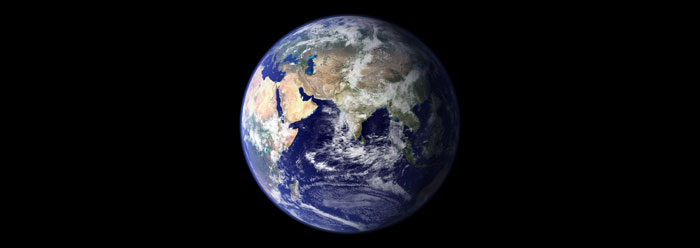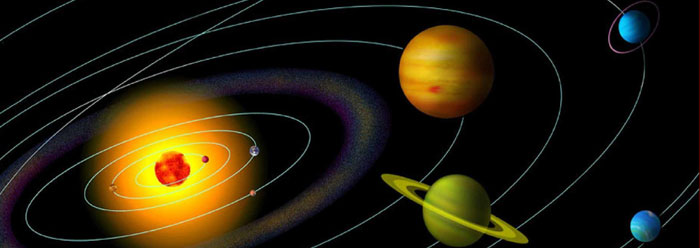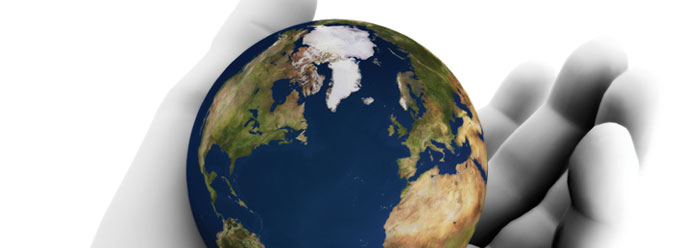
The Earth Itself
Earth is the only planet circling our sun on which life as we know it could (and does) exist.
Like no other planet, ours is covered with green vegetation, enormous blue-green oceans containing thousands of islands, thousands of streams and rivers, huge land masses called continents, mountains, ice caps, and deserts that produce a spectacular variety of color and texture. Some form of life is found in virtually every ecological niche on the earth's surface. Even in extremely cold Antarctica, hardy microscopic beings thrive in ponds, tiny wingless insects live in patches of moss and lichen, and plants grow and flower yearly. From the apex of the atmosphere to the bottom of the oceans, from the coldest part of the poles to the warmest part of the equator, life thrives here. To this day, no evidence of life has been found on any other planet.
The earth is immense in size, about 8,000 miles in diameter, with a mass calculated at roughly 5.97×1024 kilograms. The earth is on average 93 million miles from the sun. If our planet traveled much faster in its 584-million-mile-long journey around the sun, its orbit would become much larger and it would move farther away from the sun, resulting in average temperatures that are too cold for life to exist. If it traveled much slower in its orbit, the earth would move closer to the sun, resulting in average temperatures that are too high for life to exist. Earth's rotation and axial tilt also keep surface temperatures from becoming too extreme.
Our planet's "normal" processes are assuredly unique among our solar system and, according to what we know, in the entire universe.











